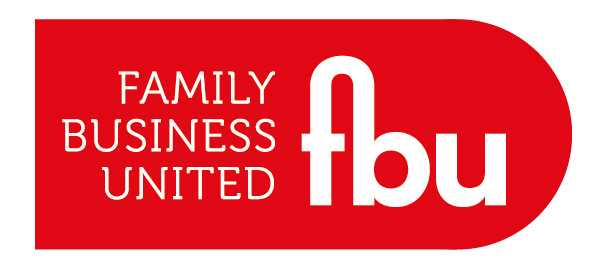10 Common Mistakes People Make When Recruiting (And How To Avoid Them)
- Jane Wylie-Roberts, CEO - Stafffinders

- Sep 30
- 6 min read

Finding the right staff can have a huge impact on your business and its potential success. The right hire can elevate your team, drive growth, and strengthen company culture. The wrong hire, however, can cost time, money, and morale. Despite the stakes, many organisations still make the same hiring mistakes time and time again.
The cost of a wrong hire goes far beyond salary cost. Research shows a bad hiring decision can cost a business anywhere from 30% of the employee’s first-year earnings to over £50,000 when factoring in recruitment fees, onboarding, lost productivity, and potential damage to team morale. A poor fit can also increase staff turnover, disrupt workflows, and negatively impact customer relationships. In short, the financial and cultural costs of hiring the wrong person can be substantial, making it crucial for businesses to invest in effective recruitment strategies that prioritise both skills and cultural alignment.
If you want to attract top talent and streamline your recruitment process, it’s crucial to recognise these pitfalls. Here are the 10 most common mistakes people make when recruiting – and what to do instead.
1. Not defining the Role Clearly
One of the biggest mistakes is rushing to hire without a clear job description. Vague or generic listings confuse candidates and lead to poor applications. A poorly defined role creates confusion for both the hiring team and the candidates. If the expectations, responsibilities, and required skills aren’t clear, candidates won’t know if they’re the right fit. Also Recycling the same job advert for every hire can be a mistake, as roles evolve over time.
Responsibilities, required skills, and even team dynamics may shift, so it’s important to refresh job descriptions to ensure they reflect the current needs of the business and attract the right candidates.
Solution: The hiring stage is the perfect time to re-assess what truly matters in the role. Instead of relying on outdated descriptions, take the opportunity to review evolving responsibilities and pinpoint the most important skills, qualities, and outcomes needed for success. This ensures your job advert is accurate, targeted, and more likely to attract candidates. The more transparent you are, the more likely you’ll attract candidates who are genuinely interested and aligned with the role. Clear definitions also make your hiring process smoother, as everyone involved has a shared understanding of what success looks like.
2. Overlooking Employer Branding
Just as you research potential employees, candidates research potential employers, and if what they find online doesn’t reflect your values or workplace culture, they may quickly lose interest.
Modern job seekers want to know what it’s really like to work at your company: the culture, the growth opportunities, the work-life balance, and even how current employees feel about leadership. If your employer brand is weak, outdated, or inconsistent, you risk missing out on high-quality applicants before they’ve even applied.
Solution: Showcase your culture online. You should regularly update your career page, leverage your social media, encourage employee advocacy and monitor and manage reviews. Highlight employee stories, benefits, and progression opportunities to stand out in a competitive talent market.
3. Relying Too Heavily on CVs
Many hiring managers still rely heavily on a candidate’s CV. While CVs provide useful background information, they rarely capture the full picture. Talented individuals may undersell themselves on paper, while others may look great on a CV but fail to perform in practice. Many companies reject great candidates because their CV doesn’t tick every box. The same can be said with competency-based questions. Relying on them can limit the interview’s effectiveness. They often focus too narrowly on past experiences, which may not reveal a candidate’s potential, adaptability, or alignment with your company’s culture and future needs.
Solution: Don’t be too quick to reject a candidate purely based on the strength of their CV. Taking the time to meet them, even if it’s only for a 20-minute informal chat, will really give you an idea of the person and their experiences. You can also use structured interviews, skills assessments, or trial projects to evaluate potential beyond what’s written on paper. It’s also a good idea to look for potential, not just history, consider a culture fit, motivation and learning ability alongside past experiences.
4. Moving Too Slowly
When recruiting, speed is critical. Top candidates are often off the market within 10-14 days, yet many employers drag their feet with multiple interviews rounds delayed decisions, or unclear communication.
Solution: Streamline your hiring process. Set clear timelines, communicate regularly, empower hiring managers to make decisions quickly and cut unnecessary stages of the interview process to keep candidates engaged. Interviews should only be 2 stages and only in exceptional circumstances 3 stages.
5. Focusing Only on Experience, Not Potential
It’s natural to want someone who has “done it all before” but focusing only on experience means overlooking candidates with transferable skills and strong growth potential. These individuals often bring fresh ideas, enthusiasm, and adaptability, qualities just as valuable as a long CV.
Hiring for attitude is just as important as hiring for skills. The right mindset, such as resilience, positivity, and a willingness to learn, can drive long-term success, whereas skills can often be developed with the right training and support.
Solution: Asses the learning abilities e.g. can the candidate pick up new skills quickly? Consider attitude, cultural fit, resilience and curiosity, and potential for growth alongside experience. Valuating the candidates' soft skills such as communication, problem-solving, and adaptability can be more important than technical experience. Sometimes the best hire is the one who can grow into the role.
6. Asking the Wrong Interview Questions
Generic or irrelevant questions don’t provide meaningful insights. Poorly structured interviews make it hard to evaluate candidates fairly and consistently. This mistake can result in hiring the most confident speaker rather than the most capable employee.
Solution: Use competency-based questions tailored to the position. Ask about real-life scenarios, problem-solving, and how they handle challenges. Make sure your interviewers have interview training to reduce unconscious bias and keep evaluations consistent.
7. Ignoring Diversity and Inclusion
Recruitment mistakes often stem from “hiring in our own image.” While unintentional, this narrows your talent pool and limits innovation. Lack of diversity can also harm your company’s reputation, making it harder to attract talent in the future.
Solution: Widen your talent pool. Use inclusive job adverts that avoid gendered or biased language, use diverse interview panels, and track diversity metrics to ensure accountability.
8. Poor Candidate Experience
From lack of communication, including not getting back to candidates, even if they are unsuccessful, to confusing processes can create a negative experience and can discourage future applications and damage your employer brand.
Solution: It’s important to recognise the time and effort candidates put into every application. By giving the same level of care and attention in return, you’re not only showing respect for their commitment but also making a valuable investment in the future success of your business.
9. Not Checking References Properly
Skipping reference checks is a shortcut that can backfire. References provide insights into a candidate’s reliability, work style, and past performance that may not come up in interviews.
Without them, you risk bringing someone on board who looks great initially but struggles to deliver.
Solution: Always follow up on references to confirm key details such as job titles, dates employed, responsibilities, skills, reliability, cultural fit and reasons for leaving. Ask open-ended questions about performance and teamwork and look for consistency between the reference and what the candidate has shared.
10. Neglecting Onboarding
The recruitment process doesn’t end when an offer is accepted. Many companies overlook onboarding, leaving new hires feeling unsupported, which can lead to disengagement and early staff turnover. A strong onboarding programme helps new employees feel welcomed, confident and connected from day one.
Solution: Have a structured onboarding programme that covers training, expectations, and integration into the team. It can be a good idea to set up a buddy/mentor. It should be someone who can answer questions and provide support aside from their manager. Check in regularly during the first 90 days to ensure a smooth transition.
Avoiding these recruitment mistakes will save you time, money, and stress; while helping you secure the best talent for your organisation. By refining your hiring process, you’ll not only fill vacancies faster but also build a stronger, more engaged workforce.
About the Author - Jane Wylie-Roberts is the CEO of Stafffinders, an award-winning family-run recruitment agency. For over 53 years, Stafffinders has been creating strong and genuine partnerships with an impressive collection of prestigious clients whilst sourcing high-calibre candidates to help them secure invaluable career-enhancing opportunities. Find out more about their work in supporting businesses by visiting their website here








%20copy%20(4)%20copy%20(1)%20copy%20copy%20(1)%20copy%20(1)-Medium-Quality.jpg)



.png)
























